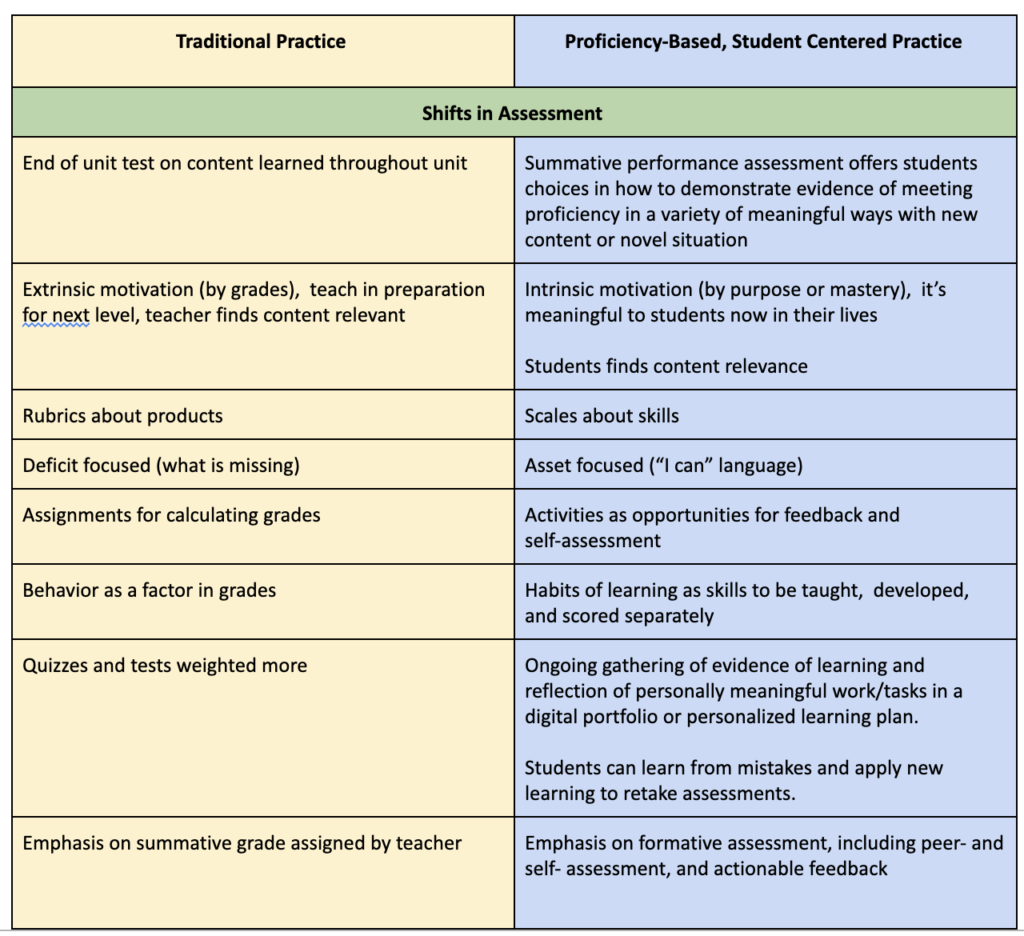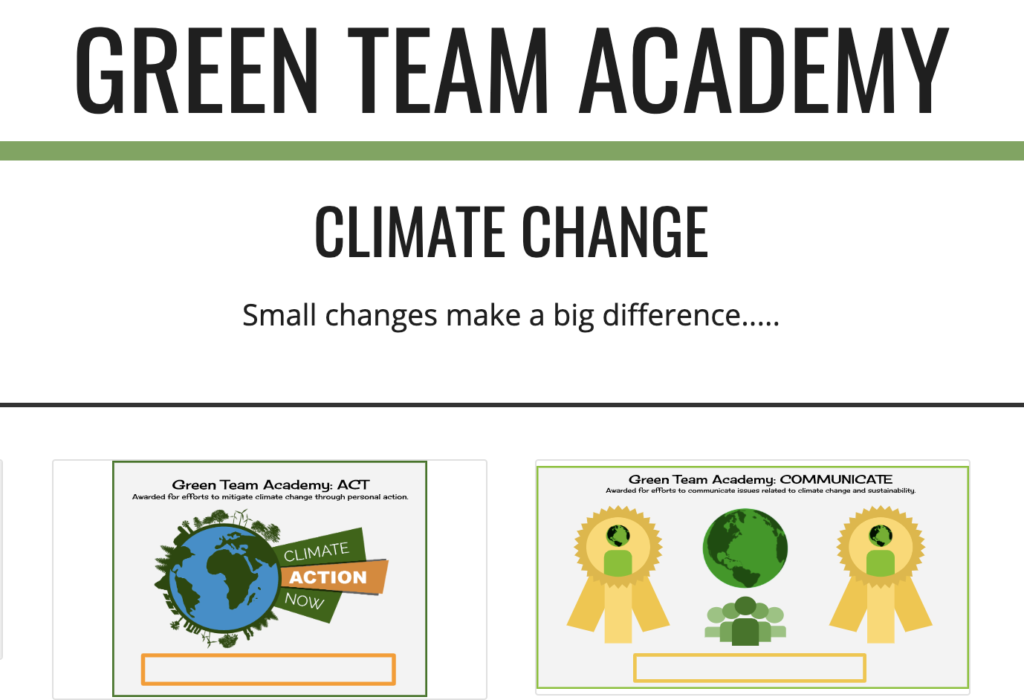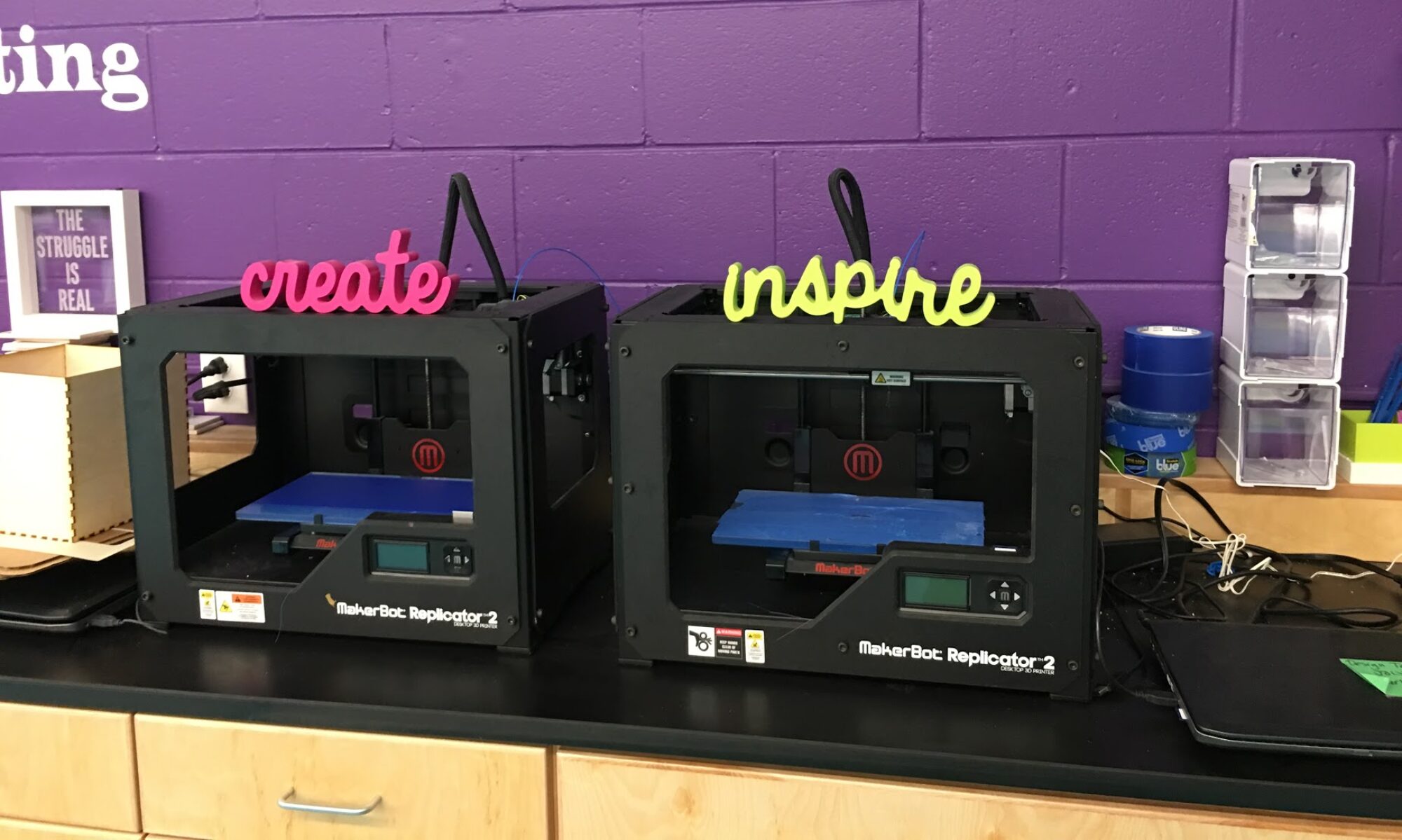How do we know what our students know and can do?
What, when, and how are we asking them to show us?
In recent conversations with my colleagues, we’ve been considering shifts in assessment required of us in proficiency-based education. Now, let’s explore how to put those shifts into practice.

When we consider those shifts, a theme emerges. We begin to see students involved in the assessment process in meaningful ways. Leading me to wonder: how do both students *and* teachers know a concept or skill is learned or mastered?
The power of documentation
Let’s explore one of these shifts. How might teachers create conditions for the ongoing gathering of evidence of learning in a digital portfolio or personalized learning plan?
Angela Stockman, educator and professional development provider, asks, “ How do we truly know what our students know? Dissatisfied by the potential for quantitative data alone to address that question, many of the teachers that I support have begun embracing documentation for learning.”
Among the advantages she describes, are the following:
- Students and teachers have the opportunity to study why and how learning happens rather than merely evaluating the product of it.
- It’s easier to weave feedback loops through the experience, increasing the likelihood that learners will reap the greatest rewards from the assessment process.
- Capturing a wider vie]ew of learning invitees teachers and students to discover the unexpected and form hunches and theories that testing cannot inspire.
Note the active role students play here.
What might documentation look like in practice?
Special Education Functional Life Skills Teacher Kelli Ohms shares How I Use Seesaw to Create a Learning Journal in my Classroom. Documentation using Seesaw increased motivation. “Students can independently see their own progress. Now that they have several months of posts in Seesaw, they can look back and see how they are improving; they say, “look how I did today? It’s better!”.”
Ohms built student documentation of learning into classroom routines. She reports “At first, my biggest challenge was teaching my students to add items independently, but now they enjoy adding new items to their journals, and even request to post unprompted!”
Documentation as learning
Janet Hale argues the act of documenting learning is indeed a mechanism for learning. Documentation as learning focuses on the process of learning using metacognitive thinking. “Documenting learning is a shift from the traditional documentation of learning, which focuses on the end product, to documentation for learning and documentation as learning (Making Thinking Visible by Documenting Learning).
Shifting to documentation for learning
Over in her 5th grade class, Melissa Anders Thompson values documentation as a means for students to take more ownership. Because of this, when her school adopted a “bring your own device” policy, she added new weekly classroom jobs. You guessed it. One is the Documenter.
“This summer I read, Who Owns the Learning by Alan November. In his book, he talks about the Digital Learning Farm, and how by giving student’s jobs within the classroom that are integral to the learning, they will take more ownership of their learning and become meaningful contributors to the class culture. The Documenter captures the learning happening in the room and in the school. They take pictures and videos of important learning. This is great practice for when we launch our Student Blogs.”
Documenting outside-of-school learning with digital badges and micro-credentials
Informal learning opportunities can be rich interest-driven experiences for students. Yet, that learning often goes undocumented outside of the context in which the learning occurs. In Digital badges in afterschool learning: Documenting the perspectives and experiences of students and educators authors Davis & Singh argue digital badges can increase the visibility of learning pathways in informal and out-of-school learning. This gives learners a sense of control and ownership. “As micro-credentials documenting specific skills and achievements, badges are well positioned to highlight the intermediate phases through which individuals pass as they deepen their expertise in a domain. By documenting where learners have been, badges can signal where they should go next.”
Vermont middle level educator Don Taylor uses micro-credentials to help students document progress through self-paced learning. When collaborative committee work ends, students can opt to work toward their Climate Change badge. Students earn certificates for completing levels. These certificates of progress get displayed on their PLP portfolios.

Portfolios fall short without documentation of progress
As educator Allison Zmuda says, “The simple act of having digital portfolios for your students doesn’t necessarily mean they are working. The learners need to own them and see benefits for #documenting4learning.”
And we couldn’t agree more. Learning more about documenting for learning with this excellent book A Guide to Documenting Learning: Making Thinking Visible, Meaningful, Shareable, and Amplified by Tolisano and Hale. And consider following the #documenting4learning hashtag.
How might you begin introducing documentation as a key component of your assessment practice?


